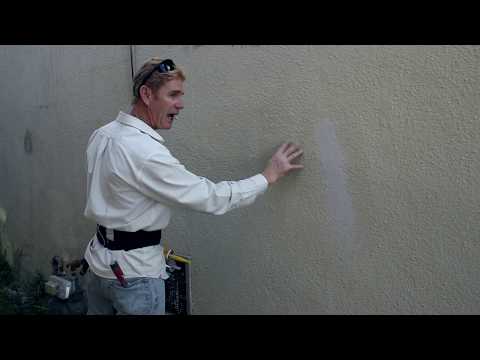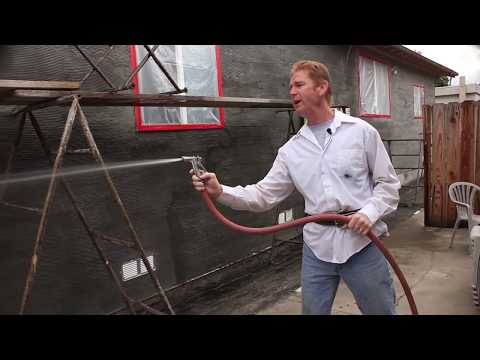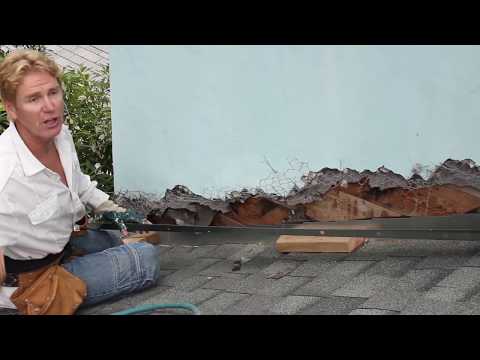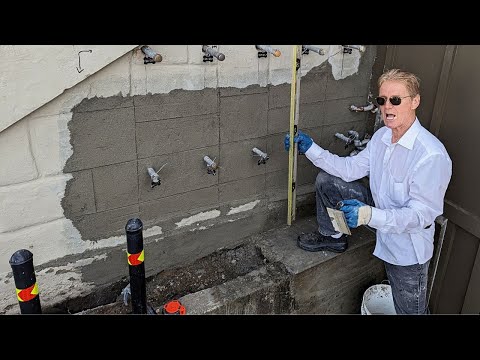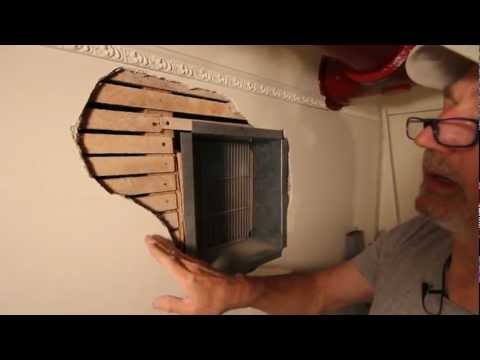A master stucco and plaster contractor shows how he repairs lath and plaster problems
The Problem: Somebody in the attic stepped onto the plaster ceiling below. A small chunk of plaster is missing, but a large area around it is loose and has separated as much as 6 inches from the lath.
The Solution: Contain the damage and avoid taking down the whole ceiling, then make a durable patch that matches the orange peel finish on the original ceiling.
Here’s an outline of his step-by-step approach:
Define the Size of the Patch
- Identify “buckles”—creases where loose plaster transitions to tight plaster—then carefully score it with a utility knife.
- Wear eye protection against plaster dust and debris falling from the attic above.
- Protect the floor from falling plaster.
- Be aware that a larger area of plaster may fall than expected.
Remove Loose Plaster
- Carefully remove pieces of plaster by hand, one piece at a time.
- Support adjacent pieces of loose plaster to prevent them from being dislodged by the piece being removed. This is especially important at the scored edges.
- Get a second person involved if necessary.
- Remove all plaster within the scored area until you reach original plaster at the perimeter that is still tight to the lath.
Clear the Keys
- Remove plaster from between strips of lath (the keys) using light taps with a hammer or the edge of a trowel.
- Be careful not to loosen plaster at the edges,
Prep the Lath
- Wire brush the lath to remove dust and any plaster still clinging to the wood.
- Brush on a liquid binder, such as Plaster Weld, which removes dust and provides a stronger bond for the plaster.
- Start at the perimeter, coating the lath and the exposed edges of the existing plaster.
- Coat all of the wood lath.
Apply Scratch Coat
- Use quick-set patching plaster (20-minute open time)
- Start applying plaster at the perimeter first (about a trowel-width)
- Be sure to push plaster into keys
- Add a second trowel-width of plaster around the perimeter
- Fill in the rest of the patch area.
- You don’t need to “scratch” the scratch coat
Apply the Second Coat
- When scratch coat is firm, apply second coat.
- No need to flatten plaster with a darby because patch needs to conform to wavy original ceiling
- Allow second coat to dry
Flush Up Patch to Existing Ceiling
- Apply plaster to flush up the patch to the edges of the original ceiling
- Make sure the patched area flows gently and does is not create a hump in the ceiling
- Minimize trowel marks
- Allow plaster to partially dry (+/- 15 minutes) before adding the orange peel finish
Roll the Orange Peel Finish
- Trowel the perimeter of the patch with a damp foam float
- Float the rest of the patch to remove any trowel marks (add water to float as needed)
- While using float, evaluate whether the plaster is ready to be rolled
- Roll the patched area with a fluffy roller dampened with water
—Kirk Giordano is a plaster and stucco contractor in the San Francisco Bay Area. His YouTube channel has a lot more videos.
